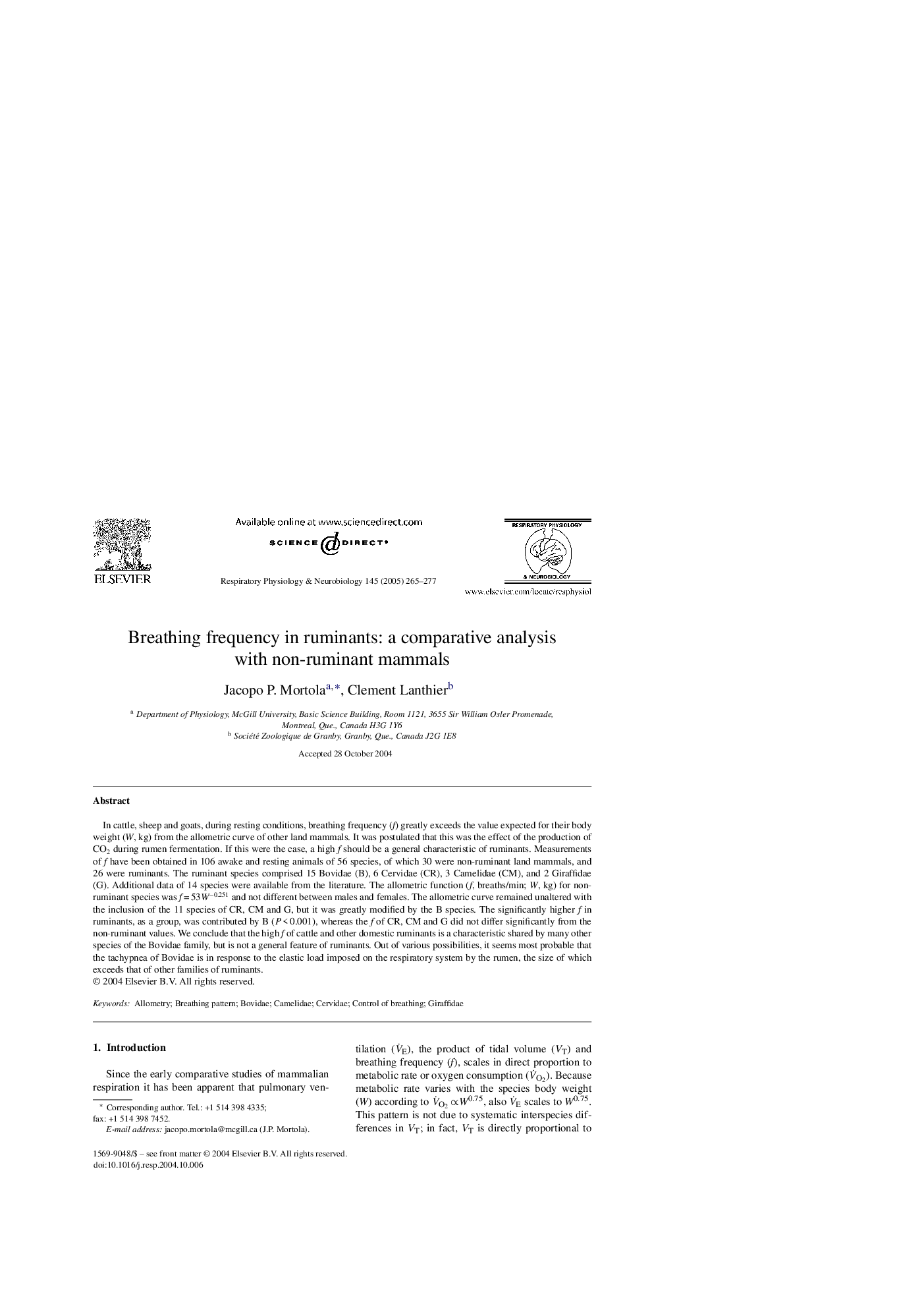| کد مقاله | کد نشریه | سال انتشار | مقاله انگلیسی | نسخه تمام متن |
|---|---|---|---|---|
| 9152280 | 1571360 | 2005 | 13 صفحه PDF | دانلود رایگان |
عنوان انگلیسی مقاله ISI
Breathing frequency in ruminants: a comparative analysis with non-ruminant mammals
دانلود مقاله + سفارش ترجمه
دانلود مقاله ISI انگلیسی
رایگان برای ایرانیان
کلمات کلیدی
موضوعات مرتبط
علوم زیستی و بیوفناوری
بیوشیمی، ژنتیک و زیست شناسی مولکولی
فیزیولوژی
پیش نمایش صفحه اول مقاله

چکیده انگلیسی
In cattle, sheep and goats, during resting conditions, breathing frequency (f) greatly exceeds the value expected for their body weight (W, kg) from the allometric curve of other land mammals. It was postulated that this was the effect of the production of CO2 during rumen fermentation. If this were the case, a high f should be a general characteristic of ruminants. Measurements of f have been obtained in 106 awake and resting animals of 56 species, of which 30 were non-ruminant land mammals, and 26 were ruminants. The ruminant species comprised 15 Bovidae (B), 6 Cervidae (CR), 3 Camelidae (CM), and 2 Giraffidae (G). Additional data of 14 species were available from the literature. The allometric function (f, breaths/min; W, kg) for non-ruminant species was f = 53Wâ0.251 and not different between males and females. The allometric curve remained unaltered with the inclusion of the 11 species of CR, CM and G, but it was greatly modified by the B species. The significantly higher f in ruminants, as a group, was contributed by B (P < 0.001), whereas the f of CR, CM and G did not differ significantly from the non-ruminant values. We conclude that the high f of cattle and other domestic ruminants is a characteristic shared by many other species of the Bovidae family, but is not a general feature of ruminants. Out of various possibilities, it seems most probable that the tachypnea of Bovidae is in response to the elastic load imposed on the respiratory system by the rumen, the size of which exceeds that of other families of ruminants.
ناشر
Database: Elsevier - ScienceDirect (ساینس دایرکت)
Journal: Respiratory Physiology & Neurobiology - Volume 145, Issues 2â3, February 2005, Pages 265-277
Journal: Respiratory Physiology & Neurobiology - Volume 145, Issues 2â3, February 2005, Pages 265-277
نویسندگان
Jacopo P. Mortola, Clement Lanthier,